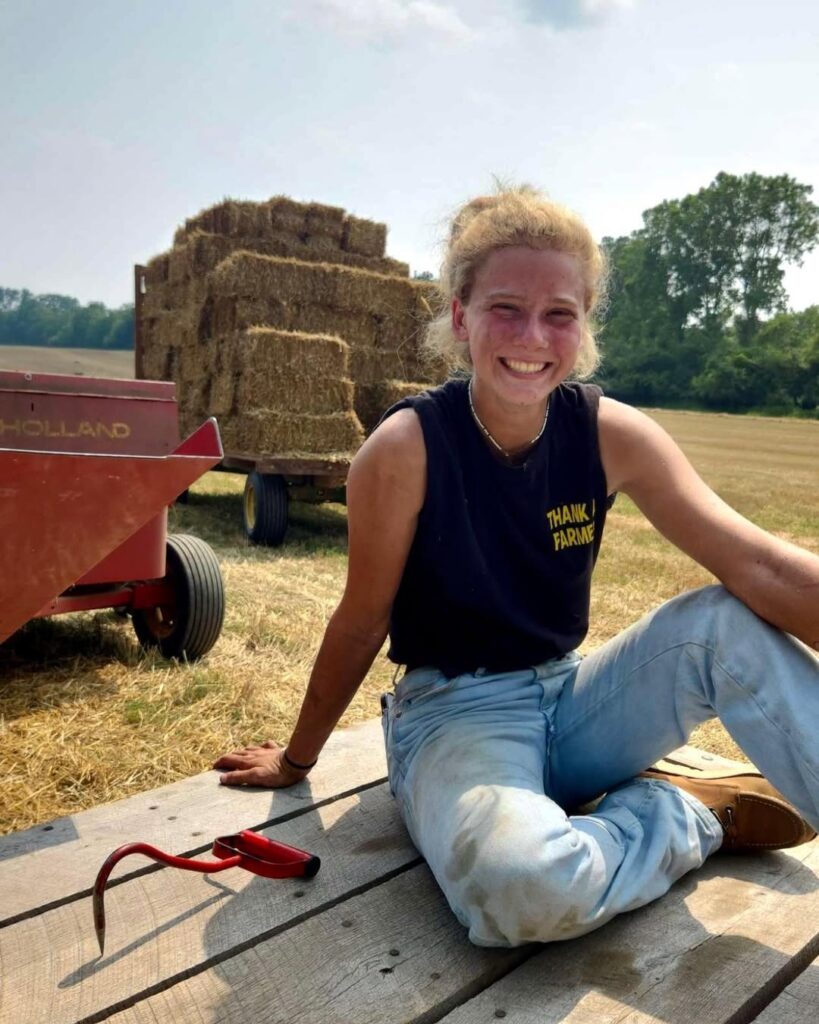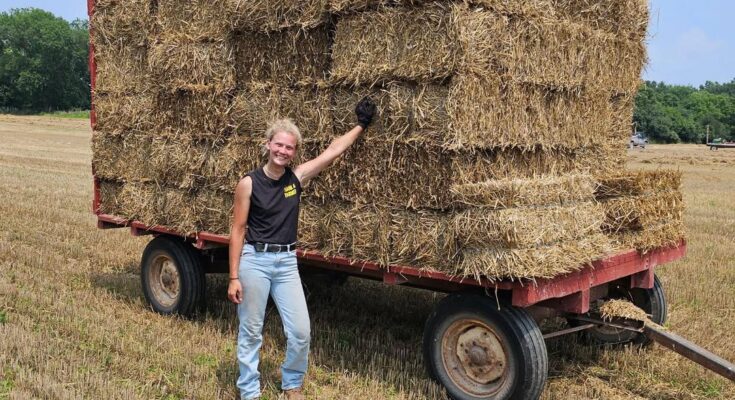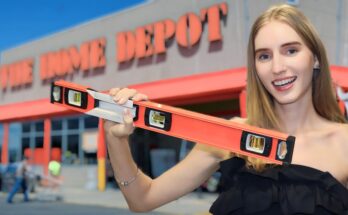Most people play games to escape reality. For me, it’s the opposite. I live the kind of life most gamers only simulate. I play Farm Simulator in real life—not on a screen, not with mods or cheat codes, but with real dirt, weather, sweat, and seasons that won’t pause. Every morning before dawn, while most of the world is still dreaming, I wake up and step into my boots to play my own version of Farm Simulator—one that doesn’t have a reset button.
My farm spans a modest 120 acres in the Midwest, inherited from my grandfather. When I was a child, I spent my summers here—riding on tractors, watching the corn grow, and feeding the animals with a curiosity that would eventually grow into a full-time commitment. Now in my early 30s, I’ve chosen to make this life my reality. While others may load up a digital landscape and strategize the best way to manage crops and livestock, I’m out here making those same decisions, only with much higher stakes.

There’s something deeply satisfying about cultivating the land. You learn to read the soil, notice the subtle changes in weather patterns, and understand the behaviors of animals on a level no software can replicate. Every season brings its own rhythm. Spring is a time of preparation—tilling, planting, fertilizing. Summer is intense with crop management, weeding, irrigation, and ensuring the animals stay healthy in the heat. Fall brings harvest, the most exhilarating and exhausting time of year. And winter, while quieter, is far from restful. There’s machinery to repair, books to balance, feed to stock, and plans to make for the coming year.
In Farm Simulator, you can fast-forward time. You can upgrade to a massive tractor with just a few clicks. In real life, the upgrades come with bills, risk, and sometimes, heartbreak. A new combine costs more than a luxury sports car. A broken part during harvest can cost you thousands in lost productivity. And no matter how careful you are, Mother Nature has the final say. A late frost, an unexpected drought, or a sudden storm can wipe out weeks or months of work. There’s no mod to undo that.
But despite the unpredictability, there’s an immense pride that comes with this lifestyle. I’m not just playing a role—I am the mechanic, the business manager, the weatherman, the vet, the truck driver, and yes, the farmer. The same satisfaction a gamer feels when expanding their digital farm, I feel when I see my soybeans thriving, when a calf is born healthy, or when I pull into the co-op with a trailer full of grain after a long day’s harvest.

Technology does play a part in modern farming, much like in the game. My tractor is GPS-guided for precision planting. I use apps to monitor weather forecasts, analyze soil data, and track expenses. Drones scout the fields for signs of disease or nutrient deficiency. In many ways, farming has become a high-tech profession—one that merges tradition with innovation. But at the heart of it all remains a very human connection to the earth.
Sometimes I chuckle when I watch someone play Farm Simulator online and get frustrated because their digital tractor tipped over or because their crops failed from poor timing. I’ve lived those moments—only when my tractor gets stuck, it takes real muscle, time, and maybe even help from a neighbor to get it moving again. There’s no quick reload, just problem-solving and perseverance.
The community aspect is also something the game can’t fully replicate. In rural farming areas, your neighbors are more than just people who live nearby. They are your emergency support, your friends, and sometimes your competition. We trade equipment, help each other during crises, and share tips that textbooks don’t teach. During a particularly nasty storm last year, my neighbor’s barn roof collapsed under the weight of snow. Within hours, half a dozen of us were there with shovels, lumber, and coffee. You don’t level up from that. You build bonds.

I won’t lie and say farming is always fulfilling. There are days when the monotony grates, when you’re ankle-deep in mud, when an animal dies unexpectedly, or when you realize the cost of fertilizer has eaten half your profit. There are years where you work harder than ever and still barely break even. But those moments are balanced by the beauty of a sunrise over a misty field, the laughter of kids chasing chickens, the satisfaction of fixing an engine with your own hands, and the quiet peace that comes from being in sync with the land.
Sometimes, people ask me why I don’t just get a “normal” job with weekends off and a steady paycheck. They wonder why I’d choose a life of hard labor and uncertainty. The truth is, I tried the office life once. It felt hollow. Every day looked the same. I missed the feeling of purpose I get when I raise something from seed to harvest, when I care for a sick animal and see it recover, when I know the food I grow ends up on someone’s table.
When I sit down at night, sore and dusty, and see players online building their dream farms in Farm Simulator, I smile. I understand the appeal. The game is relaxing, creative, and offers a taste of a lifestyle that many find fascinating. But I also know that behind the digital graphics is a real world where people like me are living that dream every day—through all the struggles and triumphs that come with it.
So yes, I play Farm Simulator in real life. It doesn’t have flashy graphics or catchy soundtracks. It’s gritty, unpredictable, and sometimes brutal. But it’s also beautiful, grounding, and deeply meaningful. Every crop I grow, every fence I mend, and every decision I make matters—not just in my game, but in the real world.
Let me know if you’d like a version with specific details about your own experience (like crops grown, location, or personal anecdotes), and I can customize it!



